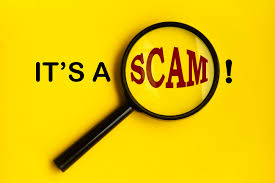
fake wallets
The Hidden dangers of fake Wallets in on line Scams
Fake Wallets: In the latest virtual age, the ease of online transactions has become a double-edged sword. At the same time, because it gives splendid ease and efficiency, it also opens the door to a myriad of cyber threats. One such chance it’s gaining traction is using faux wallets in online scams. This positioned up targets to shed light on what fake wallets are, how they’ll be utilized in scams, and how to protect yourself from falling victim.
What are fake Wallets?
In the context of online scams, a false pocket refers to a virtual wallet designed to appear legitimate but is a tool for fraudsters to steal your coins or non-public records. Fake wallets often mimic well-known and depend on digital wallet offerings, making it hard for unsuspecting customers to distinguish them from the real ones.
How Fake Wallets are Used in Online Scams
Fake wallets are employed in numerous online scams, each with procedures geared toward deceiving users. Here are a few not-unusual methods:
1. Phishing attacks
Phishing attacks involve sending deceptive emails or messages that appear to come back from a legitimate source. Those messages frequently include links to faux wallet websites designed to seize your login credentials. Once the scammers have your information, they could get admission to your genuine wallet and scouse borrow your budget.
2. Fake Pockets Apps
Fraudsters create faux wallet apps that can be downloaded from app stores. Although these apps appear and feel like valid wallet applications, they are designed to capture sensitive information, including login credentials, credit card details, and private identification numbers (PINs).
3. Social Engineering
Social engineering techniques involve manipulating people into divulging confidential statistics. Scammers might also pose as customer support representatives from official pocket providers and trick users into supplying their login credentials or different touchy records.
4. Fake funding opportunities
Scammers regularly use false wallets to lure sufferers into fraudulent investment schemes. They promise excessive investment returns and require customers to deposit price ranges into a faux wallet. The scammers disappear once the finances are deposited, leaving the victims with nothing.
Real-global Examples of fake pockets Scams
To better recognize the impact of fake wallets, let’s have a look at a few real-global examples:
1. The fake PayPal Scam
On this rip-off, users attain an electronic mail that looks to be from PayPal, notifying them of suspicious interest in their account. The email includes a link to a fake PayPal login net page where customers are brought on to enter their credentials. As quickly as the scammers have the login facts, they may be admitted to the person’s actual PayPal account and scouse borrow their money.
2. The Crypto wallet scam
Cryptocurrency investors often target scammers who create fake pocket apps. These apps promise superior protection features and decrease transaction costs. However, when users switch their cryptocurrency to the phony wallet, the price range is siphoned off to the scammer’s account.
A way to shield yourself from fake wallet Scams
Even as the tactics used in faux wallet scams can be state-of-the-art, there are several steps you may take to protect yourself:
1. Verify the source
Always affirm the source of any verbal exchange associated with your virtual wallet. If you receive an email or message claiming to be from a wallet company, contact the issuer without delay using legitimate contact information to verify its legitimacy.
2. Use trusted Apps
Most effective download wallet apps from professional resources consisting of professional app shops. Review personal critiques and rankings, and verify the developer’s facts before downloading any app.
3. Enable two-thing Authentication
Allowing two-component authentication (2FA) provides additional safety for your virtual wallet. Even though scammers gain your login credentials, they will need the second thing (usually a code sent to your cellphone) to get admission to your account.
4. Be cautious of Unsolicited gives
Be cautious of unsolicited offers and investment possibilities that appear too precise to be proper. Scammers often use those procedures to entice sufferers into depositing funds into false wallets.
5. Educate yourself
Stay informed about the trendy scams and approaches used by fraudsters. Knowledge is your greatest protection against falling victim to fake wallet scams.
Conclusion
The use of faux wallets in online scams is a growing concern that requires vigilance and focus. Knowing how these scams function and taking proactive measures to protect yourself can reduce the threat of falling to fraudsters. ConstantlyConstantly verify the source of any conversation, use depended-depended-on apps, enable two-element Authentication, be cautious of unsolicited offers, and teach yourself about ultra-modern threats. In doing so, you will be better equipped to navigate the digital world competently and securely.
Remember, in the realm of online transactions, it is always better to be secure than sorry. Shield your virtual belongings and personal records by staying one step ahead of scammers.



